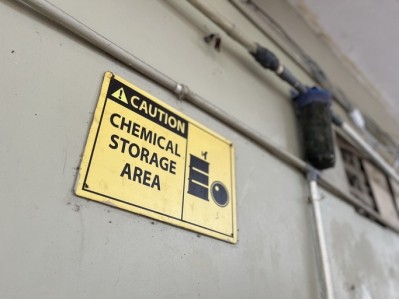Industry action urged amid vitamin supply crisis following BASF fire

Such steps are crucial for maintaining global food and nutrition security, according to Silvia Sonneveld, head of the vitamin unit at dsm-firmenich’s animal nutrition and health business.
Her comments follow BASF's announcement of delays in restarting vitamin and carotenoid production after a plant fire. On August 7, the chemical giant declared force majeure on the supply of certain vitamin A, vitamin E, and carotenoid products, as well as some aroma ingredients, due to the incident at its Ludwigshafen facility in late July.
This disruption has led to price volatility and market instability for Vitamins A and E. With several producers, including dsm-firmenich, undergoing maintenance shutdowns, there is limited capacity to increase production quickly, warned Sonneveld
As a result, tightness in the supply of Vitamins A and E is expected in Q4 2024 and Q1 2025, with higher prices likely continuing into 2025, she forecasts.
“The limited availability of these essential vitamins poses significant challenges for the industry. Vitamins are crucial for animal nutrition, directly influencing animal health, growth, feed quality, and producer profitability. Reducing vitamin levels or using unverified substitutes can increase production costs without significantly lowering feed expenses, risking business profitability.
“Maintaining proper vitamin levels in feed supports a positive return on investment (ROI) for farmers, boosting profitability and promoting sustainable agriculture.
“While this disruption primarily affects Vitamins A and E, it illustrates the broader risks of sudden supply chain interruptions. The scarcity of vitamins not only leads to high prices but also negatively impacts animal protein production and animal welfare,” she told FeedNavigator.
The supplier remains committed to safety and compliance, ensuring reliable production through backward integration and nine global production sites, offering a full vitamin portfolio during this period of market turbulence, added Sonneveld.
Following the fire at the BASF plant, there has been a sharp increase in demand for emergency supplies of vitamins A and E, and a hike in prices for those products, notes Adisseo. Its production sites are running at full capacity to meet the increased demand, it adds.
US contingency plans
A recent report from the American Feed Industry Association (AFIA) highlighted the steps being taken to address the US' overreliance on a limited number of suppliers for crucial inputs like vitamins and amino acids used in animal feed production.
In 2023, AFIA launched a supply chain resiliency task force to tackle this issue, noting that such dependency threatens supply chain stability and could affect members' ability to produce goods affordably. Additionally, in 2024, the US Department of Commerce appointed AFIA’s Gina Tumbarello to its advisory committee aimed at enhancing US supply chain competitiveness, ensuring industry concerns are addressed.
Tumbarello outlined the efforts of the AFIA’s supply chain resiliency task force:
"It is focused on helping the AFIA staff better understand the challenges within the vitamin and amino acid supply chain to inform their strategic approach and gathering insights on supply chain issues that our members are facing. With this knowledge, the AFIA staff are actively engaging with policymakers on Capitol Hill and within the Biden administration, not only advocating for proactive measures to prevent supply chain bottlenecks but also seeking mechanisms that bolster domestic production and expansion of critical inputs like vitamins and amino acids."
Legislation
She also emphasized the importance of legislative efforts, saying:
"We continue to support initiatives such as the Securing American Agriculture Act, which aims to strengthen our agricultural supply chains. Additionally, we are encouraged by the recent identification of vitamins and amino acids as critical goods under the Indo-Pacific Economic Framework (IPEF) supply chain agreement, opening doors for potential international cooperation.
“Our efforts remain focused on creating a more resilient supply chain for the US animal food industry, reducing dependency on single sources and enhancing domestic production capabilities."
When asked about the timeline for establishing domestic vitamin production sites, Tumbarello noted the complexity of the process:
“While the exact timeline can vary depending on several factors—such as the scale of the facility, technological advancements, and market conditions—it could take anywhere from several years to over a decade to fully establish and scale up domestic production capabilities."
She added that the AFIA is exploring ways to accelerate this process, including leveraging existing resources, fostering public-private partnerships, and creating incentives to encourage investment in domestic production.
Regarding how US officials might encourage other vitamin-producing nations to enhance their domestic production capabilities to create diversified supply sources, Tumbarello explained:
“This can be achieved through a combination of diplomatic engagement, trade agreements, and collaborative initiatives. This might include leveraging bilateral and multilateral trade negotiations to create incentives for increased investment in vitamin production, sharing best practices, and providing technical assistance and capacity-building support to help countries develop their production infrastructure.
“Additionally, the US could promote partnerships between private sector companies and government entities to facilitate technology transfer, improve supply chain resilience, and ensure regulatory alignment. By fostering an environment that supports mutual growth and stability, the US can help create a more diversified global supply chain, reducing reliance on any single supplier and enhancing overall market resilience."







